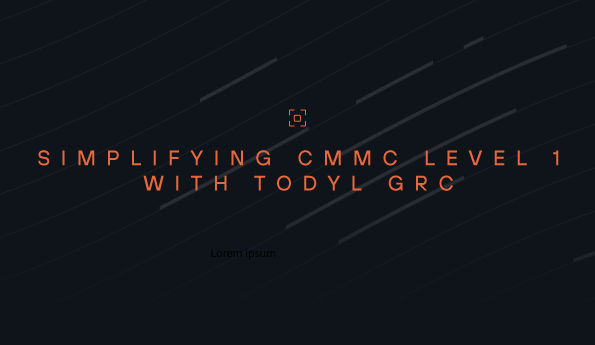The Overlap of SASE and Zero Trust Security
Staying ahead of the cybersecurity curve is crucial for protecting sensitive data and maintaining the integrity of your organization's network. Two prominent approaches to network security, Secure Access Service Edge (SASE) and Zero Trust Security, have gained significant attention in recent years. While these concepts may appear distinct, there is a noteworthy overlap between them, especially when it comes to Zero Trust Network Access (ZTNA). In this blog post, we will explore the convergence of SASE and Zero Trust Security, shedding light on the benefits of adopting them both to fortify your organization's cybersecurity posture.
Understanding SASE
SASE is a comprehensive security technology that combines wide-area networking (WAN) capabilities with network security services to create a unified, cloud-native solution. The best SASE solutions integrate various security features such as Secure Web Gateways (SWG), Firewall as a Service (FWaaS), Domain Name Service (DNS), and more into a single, scalable architecture. This consolidation simplifies network management, reduces latency, and enhances security.
You can learn about SASE in greater detail in our eBook.
Zero Trust Security: A paradigm shift
Zero Trust Security is a cybersecurity philosophy that challenges the conventional perimeter-based security model. The fundamental principle of Zero Trust is to trust nothing and verify everything, regardless of location within or outside the corporate network. This approach requires continuous authentication, strict access controls, and least-privilege access policies to ensure that only authorized users and devices can access sensitive resources.
For more information on Zero Trust, read our comprehensive Zero Trust guide.
ZTNA: The overlap of SASE and Zero Trust
ZTNA extends the principles of Zero Trust Security to network connectivity. It focuses on ensuring that only authenticated and authorized users and devices can access specific applications or services, without giving them broad network access. As such, the concept of ZTNA aligns perfectly with SASE's objectives.
- Identity-centric access control: Both SASE and Zero Trust prioritize identity as a crucial factor in access control. In a SASE architecture, identity plays a central role in granting or denying access to network resources. Similarly, Zero Trust models mandate strong authentication and continuous verification of user and device identities before granting access. This common emphasis on identity enhances security and reduces the attack surface.
- Micro-segmentation: SASE and Zero Trust promote micro-segmentation, which involves dividing the network into smaller, isolated segments. This limits lateral movement for potential attackers and contains breaches. Micro-segmentation is a core component of both SASE and Zero Trust, ensuring that users and devices can only access the specific resources they need for their tasks.
- Dynamic policies: Another shared characteristic is the use of dynamic policies. In a SASE environment, security policies adapt to changing conditions, such as user location and device health. Zero Trust policies are similarly dynamic, adjusting access privileges based on real-time context and risk assessments. This adaptability is critical in the face of evolving threats.
- Cloud-native architecture: SASE leverages cloud-native technology to provide flexible and scalable security services. Zero Trust principles align with this approach by decentralizing security enforcement and placing security controls closer to the users and applications they protect. The cloud-native nature of both paradigms ensures agility and resilience.
- Encryption: Both SASE and Zero Trust prioritize end-to-end encryption to secure data in transit. This ensures that even if an attacker gains access to the network, the data remains confidential and protected from eavesdropping.
Benefits of combining SASE and Zero Trust
Building off the overlap, businesses reap several benefits when combining SASE and Zero Trust Security.
- Enhanced security: The overlap of SASE and Zero Trust creates a robust security framework that leaves no room for trust assumptions. This approach significantly reduces the risk of insider threats, lateral movement by attackers, and unauthorized access.
- Improved user experience: By focusing on identity-centric access and dynamic policies, the combination of SASE and Zero Trust allows for a seamless and frictionless user experience. Users can access the resources they need from anywhere, while the security system continuously adapts to evolving conditions.
- Scalability: Both SASE and Zero Trust are designed to scale with the needs of modern organizations. This scalability ensures that as your organization grows, your security infrastructure can easily expand to accommodate new users, devices, and applications.
- Simplified management: The consolidation of security services in a SASE architecture simplifies network management, making it easier to enforce Zero Trust policies. This results in reduced operational complexity and lower administrative overhead.
Learn more
The convergence of SASE and Zero Trust Security, particularly through ZTNA, offers a powerful solution to the evolving threat landscape. By combining identity-centric access control, micro-segmentation, dynamic policies, cloud-native architecture, and encryption, organizations can fortify their cybersecurity posture and adapt to the ever-changing world of cybersecurity. Embracing the overlap of SASE and Zero Trust is not just a forward-looking strategy; it's a necessity in today's interconnected digital ecosystem.
Learn more how Todyl can help you enforce Zero Trust Security with SASE by learning about our product here.
See Todyl in Action
Learn how you can protect what you built.
Stay on the Cutting Edge of Security
Subscribe to our newsletter to get our latest insights.



